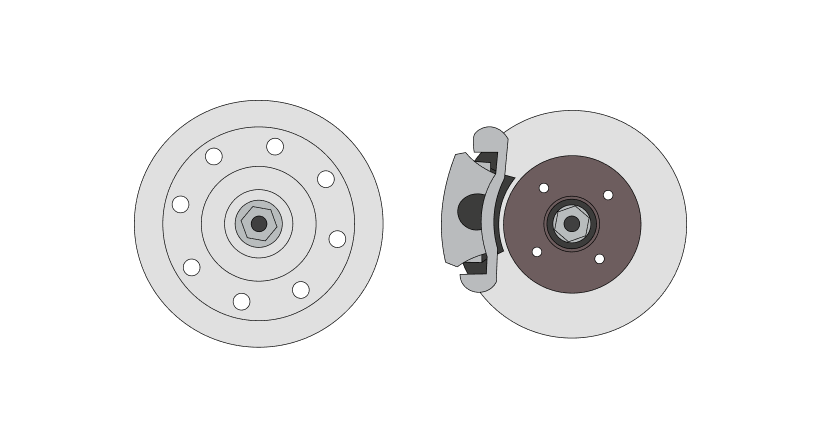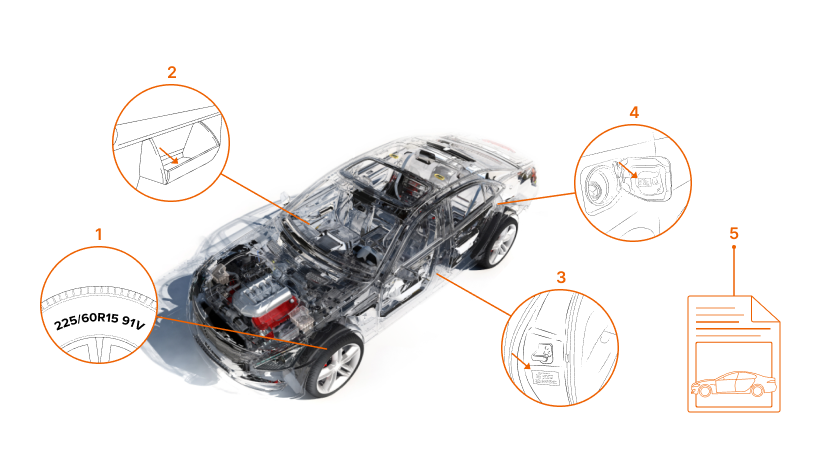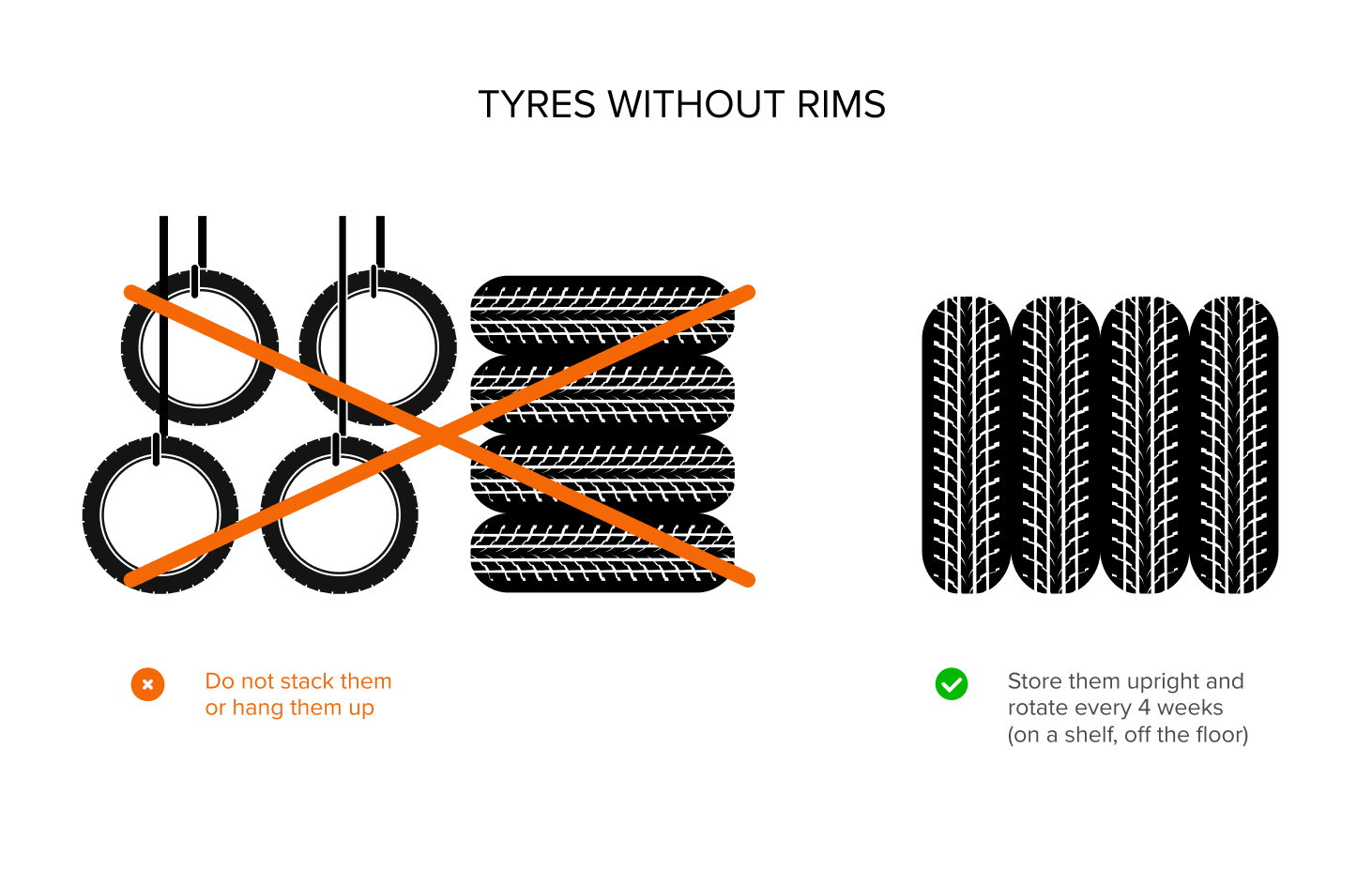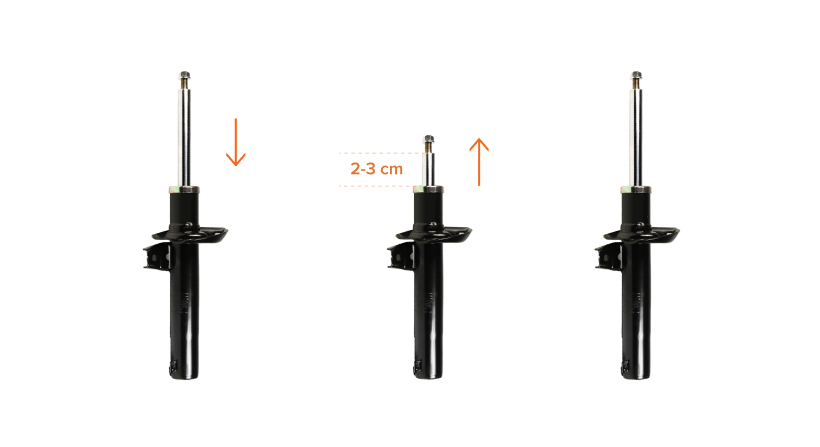Brake discs
When choosing brake discs, pay attention to the following:
- Brake system manufacturer. The system’s specifications may vary depending on the car’s trim level and year of production, even if the vehicles have the same technical features. The brake system brand is usually marked on the brake calipers. You can also find this out from the VIN.
- Brake disc size. This largely depends on the car specifications. Generally, the higher the engine output, the larger the diameter of the brake discs. You can find out these data by removing the components from the car or using the OEM number. This number can be found using the VIN.
- Brake disc type. This can be determined based on the VIN. There are solid, vented, and drilled type components.

Please note:
- Brake discs are only sold in pairs (there are exceptions for certain cars).
- Disc brakes aren’t always installed on both axles. On some vehicles they’re only mounted on the front axle, while the rear is equipped with drum brakes. You can identify the brake type without removing the wheel from the car.
- The price shown on the website is for 1 disc.
- We recommend that you replace the parts in pairs on an axle to improve the braking efficiency.
- When fitting new discs, it’s advisable to change the brake pads even if they’re not worn out. The fact is that these parts are bedded in to your old discs and cannot function properly with the new ones.
Tyres
To choose the right tyres, consider the following parameters:
- the weather conditions they’re designed for (winter, summer, all-season);
- tread pattern (symmetrical, asymmetrical, directional, non-directional);
.png)
- wheel rim diameter (R15, R16, R18 etc);
- width (in mm, depends on the wheel rim width);
- aspect ratio (the sidewall height expressed as a percentage of the tyre width);
- load index (maximum weight the tyre can safely support);
- speed rating (the maximum permitted speed of the vehicle).
The size is marked on the sidewall of the tyres that are now fitted on your car. You can also view the specifications of the right tyres for your vehicle:
- on the inside of the glovebox door;
- on the inside of the driver's door;
- on the B-pillar doorjamb;
- on the fuel flap;
- in the car owner's manual / service book.

We recommend storing your tyres in a cool, moderately humid room on a special tyre rack. You can also keep them in special bags.
.png)

Please note: To prevent uneven tyre wear, have your wheels balanced and aligned after mounting the tyres.
.png)
Brake pad set
To choose the right brake pads, pay attention to the type and brand of your brake system. Keep in mind that, depending on your car's design, it may have disc brakes on both axles - or disc brakes on the front, and drum brakes on the rear axle.
Before ordering brake pads, take into account the following:
- buying 1 pad is impossible, they’re always sold as 4 piece sets;
- a set is only intended for one axle, for mounting on the left and right;
- the price shown on the website is for a set.
Shock absorbers
To choose the right shock absorbers, first check whether your car is fitted with heavy-duty or sports suspension. You can find this out from the VIN. If you have conventional suspension, you can safely proceed with selecting the parts.
Consider the following:
- There are hydraulic and gas-charged shock absorbers.
- They're usually sold in pairs per axle. There are exceptions for some vehicles where you can buy one part separately.
- Some components are only designed to be mounted on the left or right side. There are also universal types, suitable for both sides.
Please note:
- Shock absorbers should be replaced in pairs on an axle, even if only one has failed.
- Prime them before installation by fully compressing and extending them several times while holding them in the upright position.
- When being primed, a hydraulic shock absorber, unlike a gas-charged one, doesn’t return to its original position on its own. This is due to its design and doesn’t mean it is faulty.

Wiper blades
To choose the right wiper blades, it's important to pay attention to the following specifications:
Design
Wiper blades can be conventional, beam, or hybrid types.
- Conventional. These are inexpensive and easily adapt to the curvature of the glass. Suitable for mild winter climates.
- Beam. These have high downforce, good aerodynamics, and are not prone to icing.
- Hybrid. These ensure quality cleaning even when driving at high speeds. The aerodynamic spoiler along the entire length also protects the components against dirt and moisture.
.png)
Connector type
Find out what attachment method is used on your vehicle. This will help you avoid any difficulties when installing the new components. Many manufacturers include a universal adapter compatible with almost all connector types.
Common types of wiper blade connectors:
Hook/J-Hook/U-Hook. Usually marked with the letter “U” or “J”. The most popular dimensions are 9×3 mm and 9×4 mm, but other sizes are also available. This type has been in use since the 1950s and is still utilised by most Japanese car manufacturers like Honda, Mitsubishi, Subaru, Suzuki, and Toyota.
Side Pin/Side Lock/Pin-and-Hold/Pin-and-Hook. Cylindrical mount. The most popular size is 22 mm, and, on some cars, 17 mm. This attachment type has been used since 2005 on BMW 3 Series, Ford Focus, Skoda Octavia, Vauxhall Astra, Volvo S40/V40, VW Jetta/Passat, and some Mercedes-Benz, VW, Audi, Porsche, and Peugeot models.
Push Button. Square-shaped. The most popular size is 19 mm. It has been used since 2007 in VW, Audi, Skoda, Volvo, Renault, Peugeot, Citroën, and Ford cars. Two varieties are available: Wide Push Button (22 mm) and Narrow Push Button/Slim Top (16 mm). Since 2010, the latter has been used in VW and Audi cars.
Pinch Tab. Features a hollow design with small tabs at the top and on the sides. This connector type has been used since 2008 on some Audi, Fiat, Saab, Mercedes-Benz, Opel, BMW, Peugeot, Citroën, Volvo XC90, and Nissan Qashqai cars.
Top Lock. Resembles the above type of connector. It can be seen on BMW 5/6 Series and some other vehicles. Not common.
Pin Lock. It features a long slot with a pin positioned across the end. This connector is used on vehicles from European manufacturers like Audi, Mercedes-Benz, and Seat.
Side Mounting. Features a small platform-like element on a stem. It is only used on certain Renault models and older US-made vehicles.
Claw. Its specific shape resembles a claw. Used on Audi A6 and some Seat models. Not common.
Bayonet Arm. This connector is shaped like a curved paw with a small window in the middle. Used since 2004 on Renault Megane/Clio/Fluence and Saab vehicles.
MBTL 1.1 (Cover Lock). Includes a special cover which you should first snap on and then insert the second part of the mount. Has been used since 2013 in almost all Mercedes-Benz cars.
Sizes
Bear in mind that both front components are of the same design, but may differ in size. The component on the driver’s side is usually longer than the one on the passenger’s side. Measure the length of the parts to be replaced with a tape measure or refer to the car’s owner manual. The dimensions of the new accessories must correspond to these measurements. If the wiper blades are too short, they can leave unclean areas. Components that are too long may hit each other during operation and will not press firmly enough against the glass. The windscreen seal is also likely to get deformed in this case..png)
Please note:
- Do not install products with specifications that differ from those recommended by the car manufacturer.
- Wiper blades for right-hand and left-hand drive vehicles have different designs.
- The front wipers operate in sync with each other and tend to wear out evenly. It is therefore recommended to replace them at the same time.